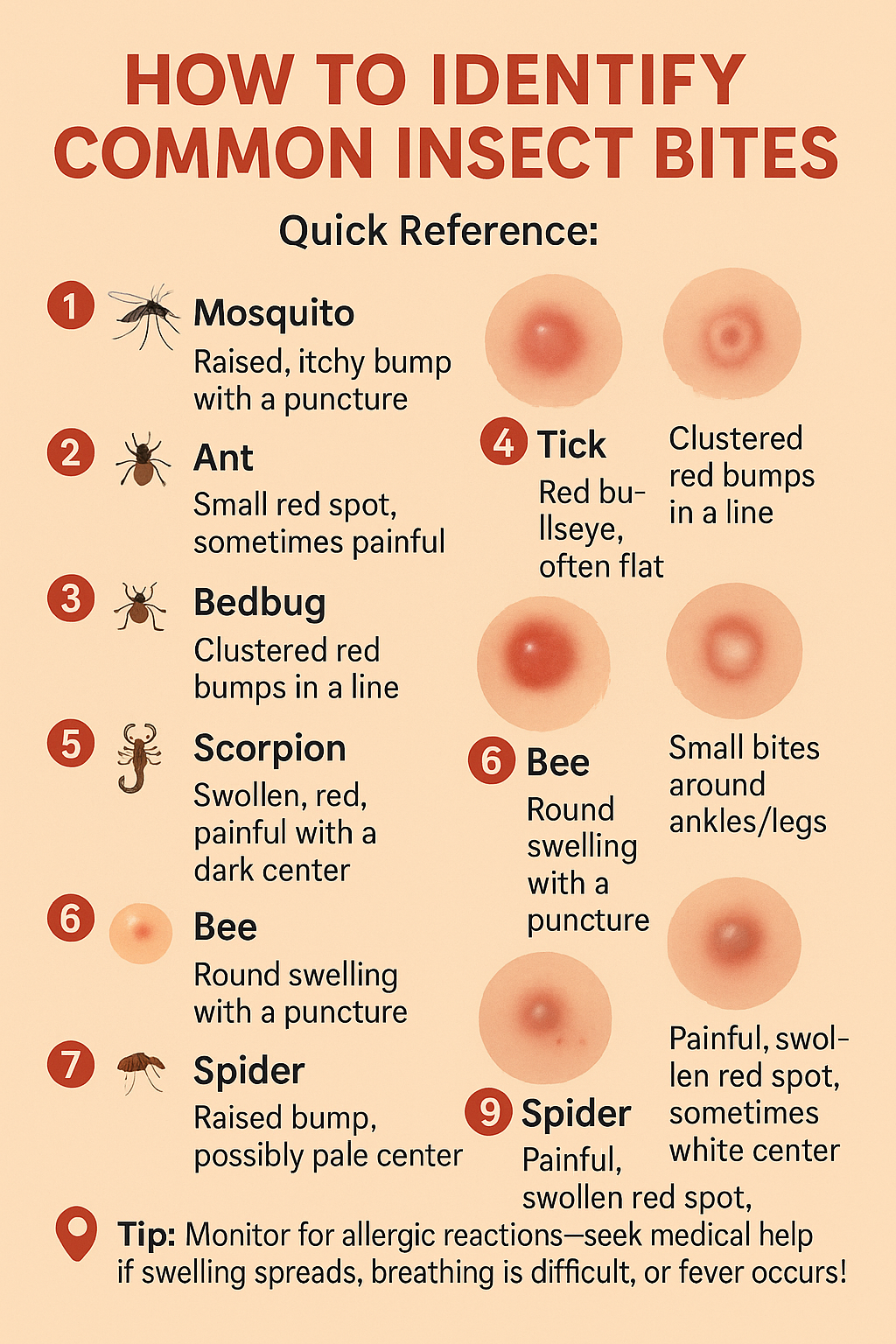How to Identify Common Insect Bites: A Quick Guide to Treatment and Peace of Mind
When summer arrives and you’re spending more time outdoors, insect bites become a common nuisance—and sometimes a real health concern. Knowing how to identify different insect bites is more than just curiosity. It’s the first step toward fast relief, proper treatment, and avoiding complications.
In this guide, we’ll walk you through common insect bites, their appearances, and when to seek medical attention. Whether you’re dealing with a mosquito bite, bedbug bites, or a more serious sting from a scorpion or wasp, this quick breakdown will help you recognize the culprit and take the right steps.
—
Why It’s Important to Recognize Insect Bites
Different insect bites have distinct symptoms—and while some are just itchy annoyances, others can lead to allergic reactions or transmit diseases. Understanding what bit you can help:
Ease anxiety with proper identification
Guide first aid or over-the-counter treatment
Help you know when to call a doctor
—
Common Insect Bites and How to Identify Them
Here’s your quick reference to identify insect bites by appearance and symptoms:
🦟 Mosquito Bites
What it looks like: Small, raised bump, often pink or red, with a tiny puncture mark
Symptoms: Intense itching, mild swelling
Notes: Harmless for most but watch for signs of West Nile or Zika in high-risk areas
🐜 Ant Bites
What it looks like: Small red dot, may become a blister in fire ant stings
Symptoms: Sharp pain or burning sensation, itching
Notes: Fire ants inject venom; clean the area and apply ice
🕷️ Tick Bites
What it looks like: Flat red spot, sometimes with a “bullseye” rash (especially in Lyme disease cases)
Symptoms: May go unnoticed at first, potential fever or fatigue later
Notes: Remove the tick carefully; monitor for flu-like symptoms
🛏️ Bedbug Bites
What it looks like: Red, itchy bumps in a straight line or zigzag pattern
Symptoms: Itching, possible welts
Notes: Often appear after waking; inspect bedding and furniture
🦂 Scorpion Sting
What it looks like: Swollen, red area with a darker center
Symptoms: Immediate pain, numbness, possible tingling
Notes: Seek immediate care for children or severe symptoms
🐝 Bee Stings
What it looks like: Round swelling with visible stinger or puncture site
Symptoms: Sharp pain, redness, localized swelling
Notes: Remove stinger promptly; apply ice and antihistamine cream
🦶 Flea Bites
What it looks like: Tiny red bumps, often in clusters around ankles or lower legs
Symptoms: Intense itching
Notes: Common in households with pets; treat environment as well
🕸️ Spider Bites
What it looks like: Raised red bump, may develop pale center or blister
Symptoms: Mild pain or burning; rare spiders like the brown recluse can cause necrosis
Notes: Clean wound and observe; seek care for serious reactions
🐝 Wasp Stings
What it looks like: Painful red area, possibly with a white center
Symptoms: Burning, throbbing pain, swelling
Notes: Watch for allergic reactions; wasps can sting multiple times
—
🚨 When to Seek Medical Help
While most insect bites are minor, seek emergency care if you notice:
Spreading redness or swelling
Trouble breathing or tightness in the throat
Fever, chills, or body aches
Signs of infection (pus, increased pain, or red streaks)
—
Final Tips for Preventing and Treating Insect Bites
Use insect repellent with DEET or natural alternatives like lemon eucalyptus
Wear long sleeves and pants in wooded or grassy areas
Keep pets treated to prevent flea infestations
Apply ice packs and over-the-counter anti-itch creams for relief
—
Stay Calm, Stay Informed
Most insect bites are harmless—but knowing how to recognize and treat them helps you stay one step ahead. With this guide, you’re better equipped to handle insect encounters, ease discomfort, and protect your peace of mind.

